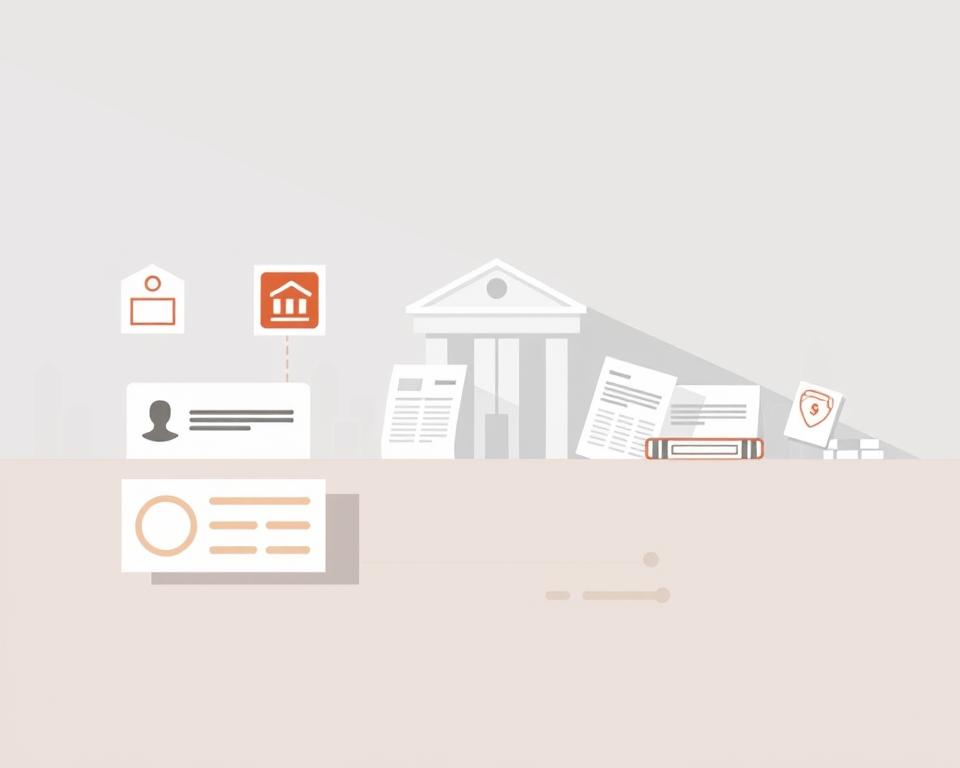Advertisement
Did you know the average American pays over $300 a year in bank fees? These hidden costs can eat into your savings. It’s important to know how to avoid these fees. By using smart strategies, you can save money and bank more wisely.
We’ll look at common bank fees like monthly fees, overdraft charges, and ATM fees. We’ll also share tips to cut down on these costs. Knowing about these fees and how to handle them can help you keep your finances stable. It also helps you get the most from your banking.
Understanding Common Bank Fees
Banking can feel like a maze, especially with all the fees. You might see monthly maintenance fees, overdraft charges, and ATM fees. Knowing about these fees helps you manage your money better.
Monthly Maintenance Fees
Most banks charge a monthly fee, usually between $5 to $25. This fee is for keeping your account open. Some banks might not charge it if you meet certain conditions, like keeping a minimum balance or setting up direct deposits.
Overdraft Fees
Overdraft fees happen when you don’t have enough money for a transaction. These fees are about $35 each time. Many banks are trying to lower these fees. But, it’s important to watch your account balance to avoid these fees.
ATM Fees
Using ATMs not from your bank can add extra costs. These fees are usually $2.50 to $4.77 per use. To avoid these, use your bank’s ATMs and look for fee-free options nearby.

How to Avoid Bank Fees
Managing your money well means finding ways to avoid bank fees. By using the right banking options, you can save money and stay financially healthy. Free accounts, keeping a minimum balance, and direct deposit are key strategies to help you achieve this.
Utilize Free Checking and Savings Accounts
Many banks offer free checking and savings accounts with no monthly fees. Choosing these accounts helps you avoid extra charges that can cost a lot over time. It’s important to compare what different banks offer to find the best fit for your needs.
Maintain a Minimum Balance
Keeping a minimum balance in your account is another smart way to dodge bank fees. Banks often waive monthly fees if you meet this balance. This not only saves you money but also helps you stay on top of your finances.
Use Direct Deposit
Direct deposit makes banking easier and more efficient. It ensures your income goes straight into your account, often keeping your balance above the minimum to avoid fees. Using direct deposit gives you quick access to your money and makes managing it simpler.

Strategies to Minimize ATM Fees
To cut down on ATM fees, using certain strategies can be both easy and save you money. Knowing how to use ATMs wisely can help you save a lot over time.
Use Your Bank’s ATMs
Using your bank’s ATMs is a simple way to avoid ATM fees. When you use an ATM from your bank, you usually don’t have to pay for withdrawals or service fees. These ATMs are made for your bank’s customers, offering a free service that can save you a lot of money.
Plan Larger Withdrawals
Planning to withdraw more money at once can also cut down on fees. Instead of taking out small amounts often, try to get a bigger sum less frequently. This way, you do fewer transactions, which means lower fees over time. By doing this, you can better manage your budget and keep fees down.
Find Fee-Free ATM Locations
Many banks have tools to find free ATMs near you. These tools make it easy to find ATMs that won’t charge you. Knowing where these free ATMs are lets you make smart choices and avoid extra fees when you need to get cash.
Managing Overdraft Fees Effectively
Dealing with overdraft fees can be stressful. But, there are ways to manage these costs. By enrolling in overdraft protection and setting up balance alerts, you can reduce the financial stress of accidental overdrafts.
Sign Up for Overdraft Protection
Overdraft protection acts as a financial safety net. It ensures your transactions are covered even when your account balance is low. Many banks offer this feature, linking your checking account to a savings account or credit line.
This option prevents the inconvenience and expense of overdraft fees. These fees can add up quickly if your balance drops unexpectedly.
Set Up Balance Alerts
Setting up balance alerts is another effective strategy. By receiving notifications when your account balance is low, you can act before transactions are declined or overdraft fees are triggered. Balance alerts give you peace of mind and help you avoid the pitfalls of miscalculating available funds.
| Feature | Benefits | Considerations |
|---|---|---|
| Overdraft Protection | Prevents declined transactions, covers fees, provides financial security | May incur fees if funds are borrowed |
| Balance Alerts | Helps monitor finances, alerts before overdraft occurs | Requires timely responses to alerts |
Understanding Wire Transfer Fees
Wire transfers are quick but often come with big fees. These fees can range from $20 to $35. Knowing about these costs helps manage your money better. If you don’t need the money right away, you can save a lot by choosing other options.
Use Wire Transfers Sparingly
Using wire transfers only when you really need to can save money. For example, if you need money for an urgent loan, it might be worth the cost. But, if you can plan ahead, you might find cheaper ways to send money.
Explore Alternative Transfer Methods
There are many ways to send money that cost less than wire transfers. You can use online services like PayPal or Venmo. Or, you can use your bank’s electronic transfer service, which is often cheaper. Learning about these options helps you avoid high fees.
Insufficient Funds and Returned Item Fees
Managing fees for not enough money and returned items needs careful planning. It’s important to keep an eye on your account balance to avoid surprise charges. By understanding your spending habits and checking your account often, you can avoid these fees.
Monitor Your Account Balance
Keeping an eye on your account is key to avoiding fees for not enough money. Many banks have apps that show your balance in real time. Setting up alerts for low balances helps you manage your money better and avoid costly mistakes.
Plan Ahead for Transactions
Planning your transactions ahead can help you avoid fees for returned items. Make sure you have enough money for big purchases or bill payments. Use budgeting tools or apps to help you plan your spending and keep track of your account.
Importance of Reviewing Bank Policies
Knowing about bank policies is key to smart money management. By checking these policies, you can dodge surprise costs. It’s especially important to understand rules on closing accounts early and fee waivers.
Know Early Account Closing Fees
Early account closure fees can cost between $10 and $25. Knowing this can help you make better choices, like when to switch banks. Staying informed about closing times can save you money.
Understand Fee Waiver Conditions
Fee waivers can cut down your banking costs. Banks offer them if you meet certain requirements, like keeping a minimum balance. By knowing these rules, you can save a lot.
| Bank | Early Account Closure Fee | Fee Waiver Conditions |
|---|---|---|
| Bank of America | $25 | Maintain a balance of $1,500 |
| Chase Bank | $12 | Direct deposit of $500 or more |
| Wells Fargo | $25 | Maintain a minimum of $1,000 |
Switching Banks: A Viable Option
If banking fees are too high, switching banks might be a good idea. Online-only banks often have lower fees and higher interest rates. This is because they don’t have the costs of physical branches.
Changing banks can seem scary, but it’s worth it. Researching your options can save you money and make banking better.
Research Online-Only Banks
Online-only banks are gaining popularity for their low costs and flexibility. They save money by not having physical branches. This means they can offer better rates to customers.
When looking at online-only banks, consider these points:
- Evaluate interest rates on savings accounts and loans.
- Check the fees associated with checks, withdrawals, and transfers.
- Assess the quality of customer service and digital tools provided.
Compare Accounts for the Best Benefits
When comparing banking options, it’s important to look closely. Each bank offers different features for different needs. Here’s how to choose wisely:
- List your personal banking needs, like savings goals or investment options.
- Examine the types of accounts they offer, such as checking and savings.
- Look at any extra features, like budgeting tools or mobile banking.
Conclusion
Understanding and managing bank fees is key to keeping your finances healthy. By using smart banking strategies, you can handle the fees that come with your accounts. Look for free checking and savings options, watch your ATM use, and find better ways to move money.
Knowing your bank’s policies and keeping a close eye on your account can also help. Being ready to switch banks when it’s good for you is another smart move. These steps can make your banking experience smooth and cost-free.
By taking charge of your money and avoiding bank fees, you can achieve financial stability. Sticking to these tips will improve your financial health over time.



